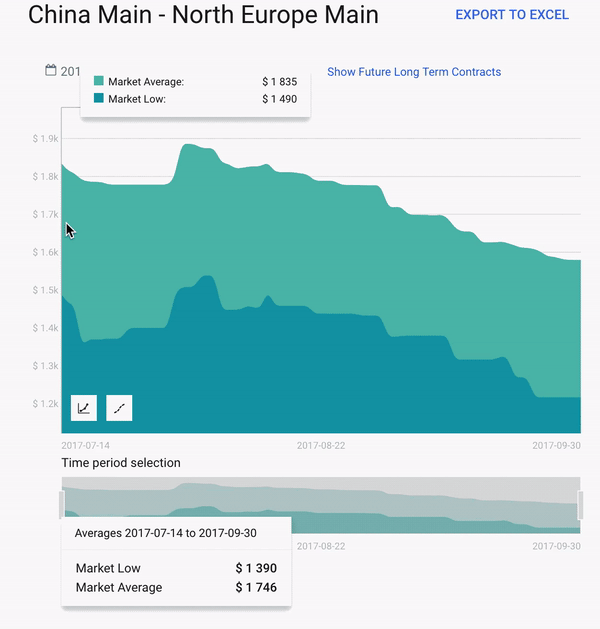
For those following box carrier rates and vessel scheduling, this might not be the most joyous of holiday times for everyone.
The difference between US and EU economic growth is reflected in the container rates from Asia to each market.
Contrasts In Short-term Rates
In mid-July 2017 to end of September 2017, short-term rates for a 40-foot container on the Asia to main European ports declined from USD 1880 to USD 1633, a fall of some 10%. Contrast that with developments in the US. Here the short-term rates, across the same period, climbed from USD 1430 to USD 1611, an increase of 13%.
Maersk, the world’s largest container line, has already cut capacity on their Asia-Europe routes by 10% and might cut more in the 4th Q, CEO Soeren Skou said last week. He also forecast a 3% full year (2017) Asia-North America volume increase, as compared to a 3-4% Asia-EU decrease.
Unemployment Causing Low Economic Confidence
The combination of Brexit fears between the UK and EU, along with Spain, Italy, and the UK bumping along at recessionary economic levels (11% unemployment in the Eurozone) have resulted in EU economic confidence index in August falling to its lowest level since 2009. Not surprisingly, those who are unemployed, under-employed, or afraid they will soon be either are not spending much on discretionary retail items.
Since retailers earn 25-40% of their annual sales in the November-December timeframe, this slump is problematic both for the EU/UK retailers as well as the carriers servicing those markets. Both the CKYH and G6 Alliances recently announced they would each be cutting cut one of their Asia-European runs, which reduces eleven weekly runs to nine.
Carrier cost-cutting will affect the all-important peak-season arrival times; Bloomberg reported the carriers have reduced vessel speeds 10% from last year in order to reduce fuel consumption. This doesn’t solve the current carrier overcapacity or the EU’s lack of demand issues, but it does serve to keep the current box rates up at their current strong levels until the larger economic issues of cargo-container supply-demand become more balanced.

Maersk is among carriers said to be raising rates on Asia-U.S. routes as current three-month-high consumer confidence and job growth rates have convinced the major retailers to be fully stocked prior to the expected Thanksgiving-Christmas rush.
Container Imports On The Rise
The Washington-DC based National Retail Federation announced that U.S. retailers may boost container imports 7.3% this month and 13% in October (from same time 2016) as they stock up for the holidays, a fact noted by several of the major carriers. Wan Min, executive vice president at China Cosco Holdings Co said this week ““The U.S. will see a mild growth in shipping demand in the third quarter. We are seeing some of the peak from Asia to U.S., but basically no peak for Asia to Europe.” In an interview, Maersk’s Skou was more succinct “Christmas will come to America, but probably not to Europe.”
As the carriers and major retailers negotiate rates as the heart of Peak Season approaches, the major carriers are far more confident about U.S holiday retail sales that that of the EU’s’ as a senior official at China Shipping Container said ““The U.S. market is turning gradually better,” he said. “On Asia-Europe trades, there is much less certainty about rates.”
https://www.xeneta.com/blog/a-split-peak-season?







